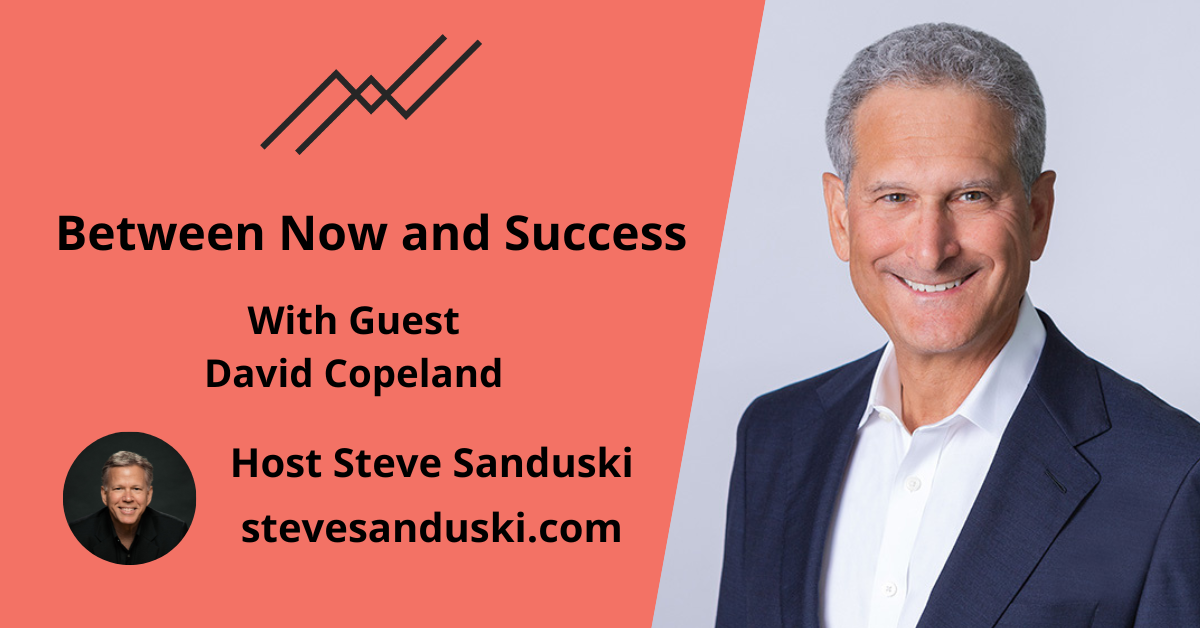David Copeland is a principal and co-founder of Strategic Wealth Partners, an RIA firm with approximately $3.7 billion in assets under advisement as of December 31, 2021.
He founded Strategic Wealth Partners in 2008 after serving as Senior Managing Director with Mesirow Financial for 21 years. He has also held investment positions with Merrill Lynch and commercial banking positions with Harris Bank.
I sat down with David at the 2022 CAIS Alternative Investment Summit in Beverly Hills, CA and we discussed his approach to investing and how alternatives play an important role in his clients’ portfolios.
The 60/40 Portfolio RIP?

David Copeland: “The key thing is controlling the volatility. And that’s what we ultimately focus on with the manager.”
When David started in the financial services industry in the summer of 1981, you could buy a 6-month federally guaranteed CD that yielded north of 15%! And the Dow Jones Industrial Average was hanging around 900.
Of course, the inflation rate was in double-digits in 1981 so it was a difficult economic time.
But think about what’s happened in the 40+ years since then.
👉 Interest rates and inflation dropped to essentially zero.
👉 Bond prices soared.
👉 The stock market went on an incredible run that culminated in the Dow peaking at over 36,000.
In that environment, it was hard to lose money. Just buy and hold and you hit the jackpot.
Today, it’s very different.
Interest rates are rising and bond prices have plunged. Inflation is well off the flat-line. And stock prices dropped by double digits.
Where do you turn?
Revisit the 40 in the 60/40
David said one of the reasons why he started his business back in 2008 is because he questioned the 40% allocation to traditional fixed income.
I would ask clients over the last 10 years, if we look back 5, 10 years from now, are you gonna be happy having a 1% return on your money, and that’s before taxes and before inflation? And pretty much universally people would say no. And so that’s basically how we ultimately introduced alternatives into people’s portfolios.
In essence, David uses alts to substitute for part of the traditional 40% allocation to fixed income.
Like fixed income (in normal times!), David looks for alts with modest volatility.
“We look for standard deviations somewhere between about 5 and 9%, with expected returns in the mid to high single digits with betas to the S&P 500 of 0.3 and below,” said David.
He finds that real estate often fits the parameters he’s looking for as a fixed income substitute. This could include low-leveraged real estate limited partnerships and other private partnerships.
In addition, structured notes and alternative credit strategies can find their way into his clients’ portfolios when appropriate. Currently, his alternative credit consists predominantly of direct middle market lending.
Alternative Asset Classes Versus Alternative Asset Strategies
We throw around the term “alternative assets” pretty loosely. So I asked David how he defines it.
David makes a distinction between “alternative assets” and “alternative strategies.”
We view alternatives as a way to create a different return stream than traditional investments. To start, we break alternatives into two general categories: alternative asset classes and alternative strategies. When we use the term ‘alternatives,’ we are more often referring to the latter, although we do have exposure to both categories.
We’re all familiar with asset classes like stocks, bonds, real estate, commodities, fine art, and cryptocurrencies. It gets a little confusing when we add the term, “alternative strategies.”
To David, alternative strategies are not an asset class. Rather, they are a way to generate “a different return stream than a strategic mix of traditional asset classes.” Ideally, through alternative strategies, David and his team can generate reasonable returns with “modest volatility and low sensitivity to both the stock and bond markets.”
He further divides alternative strategies into two big sub-buckets: alternative credit strategies and alternative equity strategies.
Alternative credit strategies include private lending, private credit, and structured credit.
Alternative equity strategies include hedge funds and private equity.
Overcoming Objections
Many advisors shy away from using alternatives because of some obvious downsides including: complexity, high fees, K-1 tax statements and delays in filing annual tax returns, and illiquidity. There’s no sugarcoating it, using alternatives requires more time and effort on both the advisor and client’s part.
So why use alternatives?.
David said he and his clients get over the downside of using alternatives “by looking at the results.”
We’re really trying to complement the expected volatility of the stock market by something with low volatility. And in order to get that low volatility, you’re gonna have to make some sacrifices. In many cases, it’s paying higher fees. But if you’re getting results on an after-fee basis, why should you complain?
Financial planning is a key focus for his firm. And they run the Monte Carlo simulations for cash flow projections. Alternatives enter the picture as a way to “narrow the outcomes” of those simulations.
“The key thing is controlling the volatility,” said David. And by selecting the right managers and using the right strategies, David’s team can often get mid to high single digit returns with modest volatility and little to no correlation to traditional stocks and bonds. And when you add that return profile to your 40% bond sleeve in a portfolio, you often end up with happy clients regardless of the market environment.
Want to view more content from CAIS’ Alternatives Investment Summit? Sign up for their learning platform, CAIS IQ.





